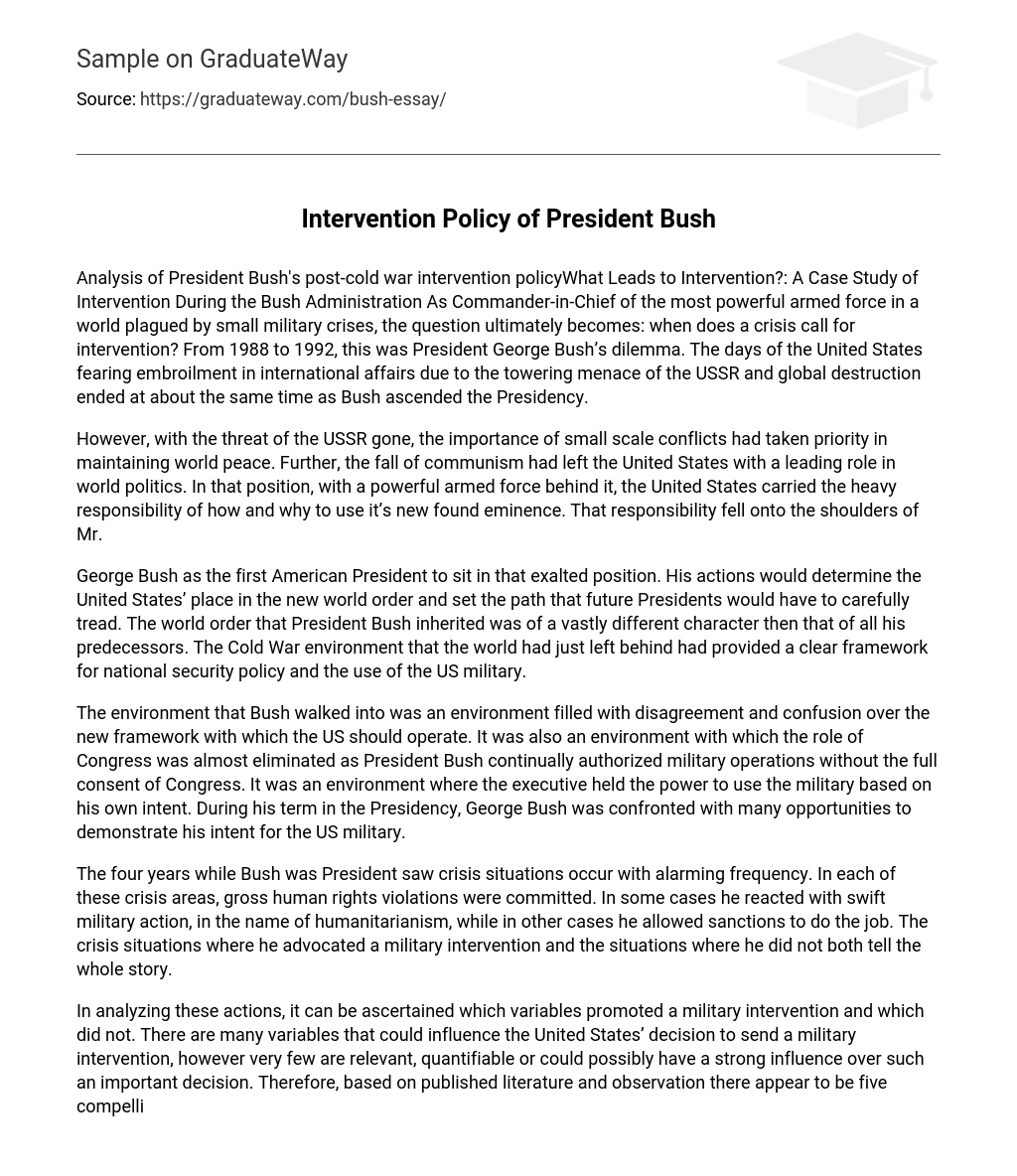Analysis of President Bush’s post-cold war intervention policyWhat Leads to Intervention?: A Case Study of Intervention During the Bush Administration As Commander-in-Chief of the most powerful armed force in a world plagued by small military crises, the question ultimately becomes: when does a crisis call for intervention? From 1988 to 1992, this was President George Bush’s dilemma. The days of the United States fearing embroilment in international affairs due to the towering menace of the USSR and global destruction ended at about the same time as Bush ascended the Presidency.
However, with the threat of the USSR gone, the importance of small scale conflicts had taken priority in maintaining world peace. Further, the fall of communism had left the United States with a leading role in world politics. In that position, with a powerful armed force behind it, the United States carried the heavy responsibility of how and why to use it’s new found eminence. That responsibility fell onto the shoulders of Mr.
George Bush as the first American President to sit in that exalted position. His actions would determine the United States’ place in the new world order and set the path that future Presidents would have to carefully tread. The world order that President Bush inherited was of a vastly different character then that of all his predecessors. The Cold War environment that the world had just left behind had provided a clear framework for national security policy and the use of the US military.
The environment that Bush walked into was an environment filled with disagreement and confusion over the new framework with which the US should operate. It was also an environment with which the role of Congress was almost eliminated as President Bush continually authorized military operations without the full consent of Congress. It was an environment where the executive held the power to use the military based on his own intent. During his term in the Presidency, George Bush was confronted with many opportunities to demonstrate his intent for the US military.
The four years while Bush was President saw crisis situations occur with alarming frequency. In each of these crisis areas, gross human rights violations were committed. In some cases he reacted with swift military action, in the name of humanitarianism, while in other cases he allowed sanctions to do the job. The crisis situations where he advocated a military intervention and the situations where he did not both tell the whole story.
In analyzing these actions, it can be ascertained which variables promoted a military intervention and which did not. There are many variables that could influence the United States’ decision to send a military intervention, however very few are relevant, quantifiable or could possibly have a strong influence over such an important decision. Therefore, based on published literature and observation there appear to be five compelling variables which would have





